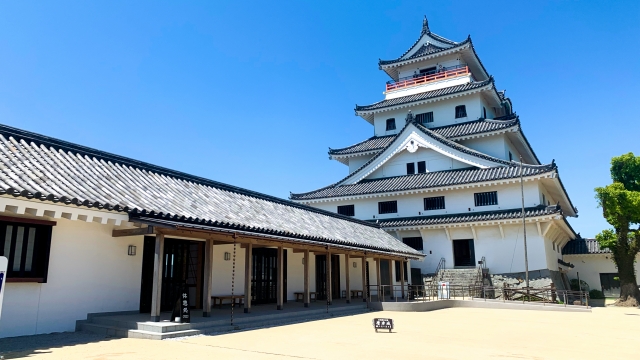About Saga Castle
Saga Castle is a castle in Saga City, Saga Prefecture, Japan, completed at the beginning of the Edo Period and was the seat of the Saga Clan, now located in the center of Saga City. In the early Meiji period, the Saga Rebellion broke out, which led to the burning of the central portion of the castle, and the remaining portion of the castle became an important cultural property in Japan.
Saga Castle was built in 1602 as a Wakaku-Tegaku composite flat castle with multiple outer walls, and when the castle was attacked by an enemy, the rest of the castle, except for the main part of the castle, would be submerged, which is why it is called “Sinking Castle”. During the Saga Rebellion in the Meiji Era, most of the castle buildings were burned down, but only the gate and the yagura have survived, and are now cultural properties of Japan. Saga Castle has experienced many fires, especially in 1726, when most of the buildings underneath Tensho were burned down, and in 1728, when Ninomaru was built and the center of the feudal government was moved to Ninomaru, it was burned down in 1835 (the 6th year of the Tenpo Period) and the feudal government was moved to Honmaru, but Tensho was never rebuilt after the Shiho Fire. The existing gate and the renewed yagura gate were built in 1838.
Today, the ruins of Saga Castle, along with the Prefectural Office, the Broadcasting Bureau, the Museum of Art, the Museum and School, and Saga Castle Park, are part of the center of Saga City.

How to get there
Jonai, Saga City, Saga Prefecture 840-0041 MAP
Access:10 minutes by bus from Saga Station
Tips
It was the scene of the Saga Rebellion in 1878. It reminded me of a scene from Ryotaro Shiba’s “Shobu ga Gotoku” (“The Year of the Moon”), in which the Saga Rebellion takes place.
At that time, the grievances of the samurai who had lost their stipends due to the four peoples’ equality reached their peak with the downfall of Saigo Takamori, a national hero, and others, and the momentum for the overthrow of the new government was in full swing. Prime Minister (today’s Prime Minister) Okubo Toshimichi planned to defeat the disgruntled samurai individually. The seven wise men of Saga, Eto Shimpei and Shima Yoshiyuu, tried to subdue the samurai, but they could not be subdued, and they were carried by the ringleaders and later beheaded or burned. Okubo later put down the Jinpu-ren, Akizuki, and Hagi revolts, and also won the Seinan War against his old friend Saigo, whom he had feared the most.
However, while we acknowledge Okubo’s keen eyesight and energy, we cannot help but feel that it was too cruel to behead Eto, who worked to establish the judiciary with the aim of creating a truly law-governed nation, and Shima, who was called the father of Hokkaido’s development.
Website
https://saga-museum.jp/sagajou/